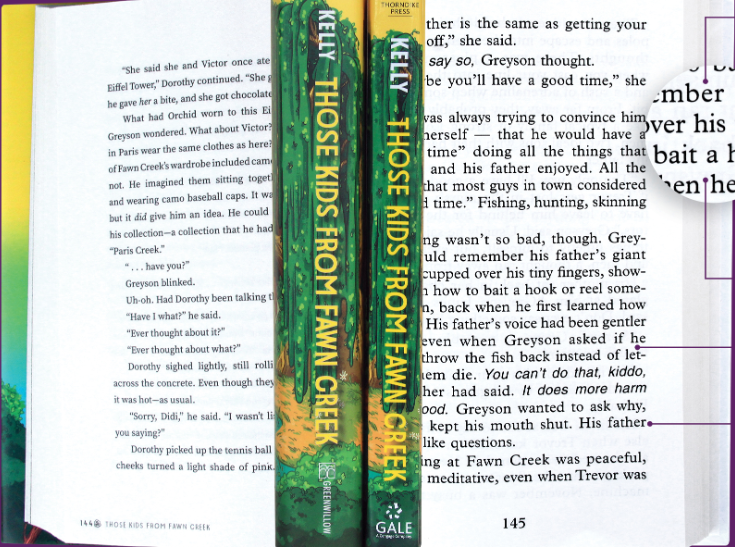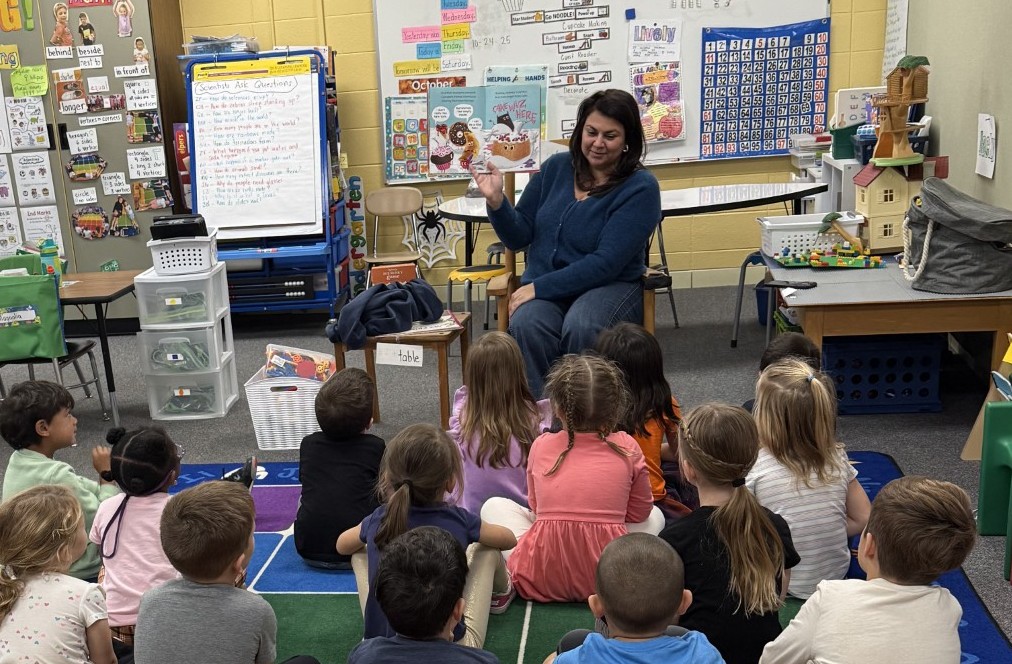Large Print Format Books Help Young Readers, Says New Research
A study conducted by Project Tomorrow found large print books help student readers, even those without vision impairments.

While helping to conduct research about the impact of large print format books on student reading, Julie A. Evans met a student who told her he enjoyed the large format books more because the books have "more detail in them than the traditional books.”
This, of course, isn’t true. Large format books use the same text as traditional books, just with larger font sizes. However, the moment stuck with Evans because clearly this young learner had the perception there was more detail in the book because they were comprehending more of it.
That student isn’t the only one who finds this book format helpful. Evans is the chief executive officer of Project Tomorrow, an education nonprofit that focuses on providing schools with actionable research. The organization recently completed an in-depth study with participants that included some 1,500 students in grades 4-12 and 56 teachers and librarians across 13 U.S. elementary, middle, and high schools.
The research found:
- 87% of teachers saw a positive impact on their students’ reading success when they switched to large print books
- 71% of teachers reported that reading large print improved Lexile scores by 2 grade levels among their students who had been reading at grade level, as did 59% of those teaching students who had been reading below grade level
- 55% of teachers saw increased comprehension among students diagnosed with ADHD
- Large format books also helped students who were learning English, had reading comprehension challenges, were easily distracted and/or anxious about reading.
The study was released by Thorndike Press from Gale, which is part of Cengage Group, and which sells large print books.
Evans says Project Tomorrow conducted the research for the study independently and was intrigued by the research because of the potential large format books have to help increase reading scores.
“We don't just take any study. We don't just take any project,” she says. “It's more about things where we think we actually can make a difference.”
Tools and ideas to transform education. Sign up below.
Large Print Format: An Option for Any Student
Many educators and caretakers perceive large print format books as designed for students with vision impairments. But this research suggests any student can benefit from the format.
This tracks with what Tasha Squires, a teacher librarian at O’Neill Middle School in Downers Grove, IL, has observed with her students. Squires, whose school participated in this research, says that when given the option of a large print format or traditional format, the vast majority of students choose the large format version. While reading in this format, they’re less likely to lose their place, tend to be more open to reading out loud, and are more engaged.
“They are more successful when they're reading large print because they're actually able to make their way through the book,” she says. “Even though there are more pages in the book, because they're physically turning the pages faster, they're staying engaged in it way better.”
Anecdotally, Squires doesn’t find ebooks with the font size increased to be as appealing to students. “Our kids are on computers the entire day, pretty much,” she says. “We use Google Classrooms a ton. They have their textbooks online.”
That’s why when it comes to reading for fun, “They don't like to read online,” Squires adds.
While audiobooks remain popular with students at her school, Squires says demand for ebooks is low enough she’s stopped purchasing any.
Takeaways For Teachers and Librarians
This research clearly indicates that many schools should offer large print books for students as a way to support individualized learning, Evans says.
“Having the option of students being able to choose if they want a large print book or a regular print book is part of that differentiation of the teaching process. It's part of personalizing and meeting learners where they are,” she says.
Squires agrees and notes that one of the best things about large print books as a reading intervention is how easy it is to implement once you have the books.
“After you show it to them, that's really all you need to do,” she says. “There's no professional development with this. None. It's the exact same book that is in small print that the teacher may have already read and might be familiar with.”
Erik Ofgang is a Tech & Learning contributor. A journalist, author and educator, his work has appeared in The New York Times, the Washington Post, the Smithsonian, The Atlantic, and Associated Press. He currently teaches at Western Connecticut State University’s MFA program. While a staff writer at Connecticut Magazine he won a Society of Professional Journalism Award for his education reporting. He is interested in how humans learn and how technology can make that more effective.

